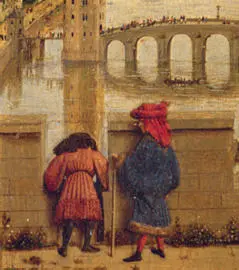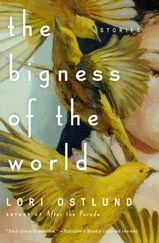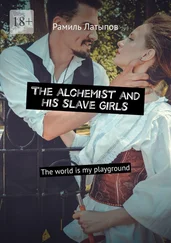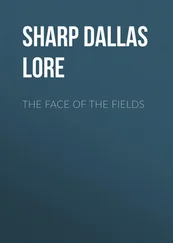According to Vasari, teller of tall tales, Van Eyck one day took a most painstaking piece of work out into the sunshine to dry. When he returned, the varnish had cracked and the wooden panel was splitting. Infuriated, but being a man who ‘delighted in alchemy’, Van Eyck experimented with numerous concoctions of egg and oil until he hit upon a secret formula of linseed and nut oil, mixed with ground pigment, that was not only heatproof but waterproof too and which brought a beautiful new lustre to his colours. Out of base substances, Van Eyck supposedly transmutes the precious stuff that ‘all the painters of the world had so long desired’.
Oil painting existed before him, of course, but most artists were still working with tempera or gesso, mixing their pigments with egg white or damp plaster, and getting stuck with their quick-drying effects. Oil paint gives depth and luminosity and reflects light from within, layer by translucent layer. Fluid and lingeringly slow to dry, it allows for infinite variations of hue, tone and consistency and the subtlest of blends and transitions. Van Eyck exploited all these properties to the fullest degree as no other painter before him, inventing not so much a technique as an entire tradition of painting.
His own pictures look as if they have never quite dried, their surfaces shining with liquid light like the very substance of which they are made. Had he lived in the late twentieth century, Van Eyck might even have painted a stunning picture of oil paint itself: the texture and gleam of it on the palette, another wonder of the world. And working so intensively with the palette and so close up to the surface of each panel he must have glimpsed himself in the oil – not exactly a face, just an imprecise blur in whatever he was painting. As long as the sun shines, there is no getting away from ourselves.
Does this painted reflection amount to a self-portrait? It is too small to be much of a likeness, this indirect glimpse, and for some its size irresistibly reduces it to a joke. ‘More playful than profound,’ 2comments one art historian, with a touch of patronizing indulgence, arguing that the artist does not show himself so much as his character. It is true that one could hardly extrapolate a recognizable likeness from the face and yet something more than character is surely represented in this little self-portrait.
Not at all, according to other experts, for this is not Van Eyck. 3Lay people may want it to be a self-portrait but they only see what they want to see and there is no textual evidence to support the claim. Written evidence trumps visual evidence for art historians even more than for lawyers; without documentary support, such identifications are purely subjective.
Of course, the case could be argued in terms of custom and practice. Artists often appear at the back, in the margins or among the crowds in Renaissance paintings pointing at themselves – it was me, I painted this – and sometimes even gesturing at their painting hand – I made the whole thing with this. (One would have thought the tiny brush in Van Eyck’s hand would have amounted to a form of positive ID too but his case proves more complex.) Some go even further, putting a name to the face. Benozzo Gozzoli included himself among the throng of Medici godfathers and hangers-on wending their way down a valley on horseback in his Procession of the Magi for the Medici chapel in Florence. He wears a scarlet hat with the words ‘Opus Benotti’ lettered in gold round the brim, a pun on his name – Ben Noti, well noted – which was also something of a self-fulfilling prophecy since his is practically the only name not now lost. The caption beneath Pietro Perugino’s pretend ‘portrait’ of himself hanging from its trompe l’oeil chain among the frescos of the Collegio del Cambio in Perugia declares that if the art of painting had never existed then Perugino would have invented it, though since he lavished more care on himself than anyone else – the self-portrait could almost be Flemish – no one could be fooled by this third-person rhetoric. It is traditional to regard such self-portraits as elaborate signatures or advertisements, instances of attention-seeking painters asking to be elevated to some higher status than anonymous craftsmen, though even Gozzoli and Perugino show more conceptual wit than such narrow interpretations allow. But Van Eyck presents problems for experts. Unlike either of the Italians, he did not support this or any other self-portrait with written certification.
So there are supposedly no self-portraits by Jan Van Eyck because none can be substantiated; or there might be one; or they are all just stick-men in a running gag. If Van Eyck paints a reflection of himself in a pearl he is simply celebrating the shininess of the world, not alluding to his own place within it. If he paints a reflection of a man in a turban in The Arnolfini Portrait , it is just another way of signing the work. Right at the outset, the depth and complexity of self-portraiture are already being denied.
But it is not romantic to call these reflections self-portraits; it is a mark of respect. Van Eyck’s art teaches the eye to see the world on an infinitesimally small scale, and it hardly belittles picture or painter to suggest that the miniature figure in the armour expresses self-consciousness in its maker: a figure in the visible world. What wit, moreover, to clinch this extraordinary illusion of reality with a reflection that introduces the here-and-now right into the picture, as if the real and painted worlds were continuous; while at the same time jamming that illusion with a reminder of the artifice involved in the picture’s making personified in the image of its maker. Discount the possibility of a self-portrait and you deny Van Eyck all of these marvellous possibilities. Put simply, you refuse to allow that he could be such an intelligent painter.
Appearances are everything in Van Eyck’s art, and his art is devoted to making them real. Most representational painters leave something to the viewer, requiring us to imagine or deduce some parts of the picture, but Van Eyck does the opposite: his paintings are stupendously complete. Not a hair out of place. Yet it is precisely this fullness of reality that Michelangelo dismissed in an early objection to the realism of the Flemish school: ‘They paint stuffs and masonry, the green grass of the fields, the shadow of trees and rivers and bridges … And all this, though it pleases some persons, is done without reason or art.’
Without reason? Without art? Look at another painting by Van Eyck, in which the Madonna and Child are foolhardy enough to grant an audience to the Duke of Burgundy’s intimidating chancellor. Rolin is a big man with a savage haircut and a look of brute cunning, much like the enforcer he was in real life. The Madonna appears to be drawing cautiously back, but the child on her knee is blessing the politician: exactly what Rolin had paid for. 4
Behind the lavish chamber in which they sit a whole world unfolds through the windows: green fields, rivers, the shadows of trees and bridges, a sparkling city and beyond it brighter vistas yet. ‘Even those landscapes which seem to extend over fifty miles retain the same degree of solidity and the same fullness of articulation as the very nearest objects,’ wrote the art historian Erwin Panofsky in a famous passage of praise. ‘Jan’s eye operates as a microscope and a telescope at the same time.’ 5And all this reality – the palace garden and every leaf of it, the meadows and every blade of them to the furthermost glittering pinnacles – is paradise on earth, the landscape of the New Jerusalem.

Detail of The Madonna of Chancellor Rolin , c.1435 Jan van Eyck (c. 1390–1441)
Читать дальше













